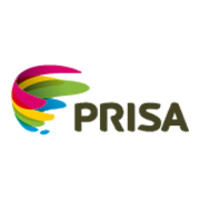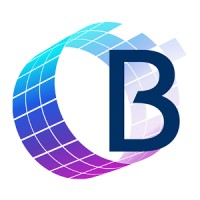
Freelancer Company Cyber Security Posture
wikipedia.orgA freelancer or freelance worker is a term commonly used for a person who is self-employed and is not necessarily committed to a particular employer long-term. Freelance workers are sometimes represented by a company or a temporary agency that resells freelance labor to clients; others work independently or use professional associations or websites to get work. While the term "independent contractor" would be used in a higher register of English to designate the tax and employment class of this type of worker, the term freelancing is most common in culture and creative industries and this term specifically motions to participation therein. Fields, professions and industries where freelancing is predominant include music, writing, acting, computer programming, web design, translating and illustrating, and other forms of piece work which some cultural theorists consider as central to the cognitive-cultural economy.
Freelancer Company Details
freelancerj
11332 employees
54680.0
512
Media Production
wikipedia.org
Scan still pending
FRE_1993691
In-progress
Between 900 and 1000
This score is AI-generated and less favored by cyber insurers, who prefer the TPRM score.
 Freelancer Global Score
Freelancer Global Score.png)

Freelancer Company Scoring based on AI Models
| Model Name | Date | Description | Current Score Difference | Score |
|---|---|---|---|---|
| AVERAGE-Industry | 03-12-2025 | This score represents the average cybersecurity rating of companies already scanned within the same industry. It provides a benchmark to compare an individual company's security posture against its industry peers. | N/A | Between 900 and 1000 |
Freelancer Company Cyber Security News & History
| Entity | Type | Severity | Impact | Seen | Url ID | Details | View |
|---|
Freelancer Company Subsidiaries

A freelancer or freelance worker is a term commonly used for a person who is self-employed and is not necessarily committed to a particular employer long-term. Freelance workers are sometimes represented by a company or a temporary agency that resells freelance labor to clients; others work independently or use professional associations or websites to get work. While the term "independent contractor" would be used in a higher register of English to designate the tax and employment class of this type of worker, the term freelancing is most common in culture and creative industries and this term specifically motions to participation therein. Fields, professions and industries where freelancing is predominant include music, writing, acting, computer programming, web design, translating and illustrating, and other forms of piece work which some cultural theorists consider as central to the cognitive-cultural economy.
Access Data Using Our API

Get company history
.png)
Freelancer Cyber Security News
Top 5 Cybersecurity Jobs That Will Pay $200,000 to $500,000 In 2020
Steve Morgan, Editor-in-Chief. Northport, N.Y. – Oct. 1, 2020. Bug bounty hunters and Fortune 500 CISOs top the list of highest compensated ...
North Korean Hackers Target Freelance Developers in Job Scam to Deploy Malware
Freelance software developers are the target of an ongoing campaign that leverages job interview-themed lures to deliver cross-platform malware ...
5 Must-Have Cybersecurity Tools for Remote Freelancers
I'm here to guide you with five must-have cybersecurity tools that'll keep you protected. These are simple to use, and I'll walk you through them in a way that ...
Freelancer creatives could be losing over $1,000 a year because of tech frustrations
"With the freelance economy expanding fast, poor login UX is becoming a quiet labor crisis, draining time, income, and trust," Frontegg says.
7 High Paying Specialized Freelancing Jobs in 2025
Starting freelancing can feel overwhelming, but mastering specialized, high-paying skills can help you stand out in competitive markets and ...
Which industries are likely to hire the most freelancers in 2025?
The industry I believe will hire the most gig and freelance candidates in 2025 is data analysis and research. As more industries move toward ...
13 Freelance Remote Jobs That Pay $50+ Per Hour In 2025
Wondering what are the highest paid freelance remote jobs in tech? Check out this list of jobs that, on average, pay about $50 per hour.
Hackers pose as employers to steal crypto, login credentials
The campaign primarily targets freelance software developers through spearphishing on job-hunting and freelancing platforms, to steal ...
COVID-19 and the Growing Demand for Freelance Work
As full-time staff positions dwindle, contract and freelance work is actually picking up steam. This includes highly technical roles.

Freelancer Similar Companies

PT Global Mediacom
Southeast Asia’s Largest and Most Integrated Media Group Indonesia’s leading integrated media company, PT Global Mediacom Tbk holds the country’s most extensive multi-platform media portfolio. The Company owns and operates 4 National Free-To-Air (FTA) Television, the country’s largest content pro

BBC
Blackburn Cathedral, as a cathedral of the Church of England, is the Mother Church of the Diocese of Blackburn and the seat of the Bishop of Blackburn. In addition to holding religious services each and every day of the year, many of which showcase our final musical tradition, and pursuing a vigor

Hubert Burda Media
With around 10,500 employees and over 500 brands world-wide, Hubert Burda Media is one of Germany’s largest technology and media companies. We create media with people, for people. We use our social relevance to make a difference and offer our employees the freedom to be creative and to invent n

PRISA
PRISA es la compañía líder en la creación y distribución de contenidos culturales, educativos, de información y entretenimiento en los mercados de habla española y portuguesa. Presente en 24 países, PRISA llega a millones de personas a través de sus marcas globales El País, LOS40, Santill

Glamour
Glamour is a women's magazine published by Condé Nast Publications. Founded in 1939 in the United States, it was originally called Glamour of Hollywood. Glamour covers the stories women want—and need—to read right now, with high-quality journalism and an authentic, accessible point of view. He

Bertelsmann SE & Co. KGaA
Bertelsmann is a media, services and education company with more than 80,000 employees that operates in about 50 countries around the world. It includes the entertainment group RTL Group, the trade book publisher Penguin Random House, the music company BMG, the service provider Arvato Group, Bertels

Frequently Asked Questions
Explore insights on cybersecurity incidents, risk posture, and Rankiteo's assessments.
Freelancer CyberSecurity History Information
How many cyber incidents has Freelancer faced?
Total Incidents: According to Rankiteo, Freelancer has faced 0 incidents in the past.
What types of cybersecurity incidents have occurred at Freelancer?
Incident Types: The types of cybersecurity incidents that have occurred include .
Incident Details
What are the most common types of attacks the company has faced?
Additional Questions
What Do We Measure?
















Every week, Rankiteo analyzes billions of signals to give organizations a sharper, faster view of emerging risks. With deeper, more actionable intelligence at their fingertips, security teams can outpace threat actors, respond instantly to Zero-Day attacks, and dramatically shrink their risk exposure window.
These are some of the factors we use to calculate the overall score:
Identify exposed access points, detect misconfigured SSL certificates, and uncover vulnerabilities across the network infrastructure.
Gain visibility into the software components used within an organization to detect vulnerabilities, manage risk, and ensure supply chain security.
Monitor and manage all IT assets and their configurations to ensure accurate, real-time visibility across the company's technology environment.
Leverage real-time insights on active threats, malware campaigns, and emerging vulnerabilities to proactively defend against evolving cyberattacks.




